WINIA Electronics 7NF86MO100N Microwave Oven User Manual
Dongbu Daewoo Electronics Corporation Microwave Oven
User Manual
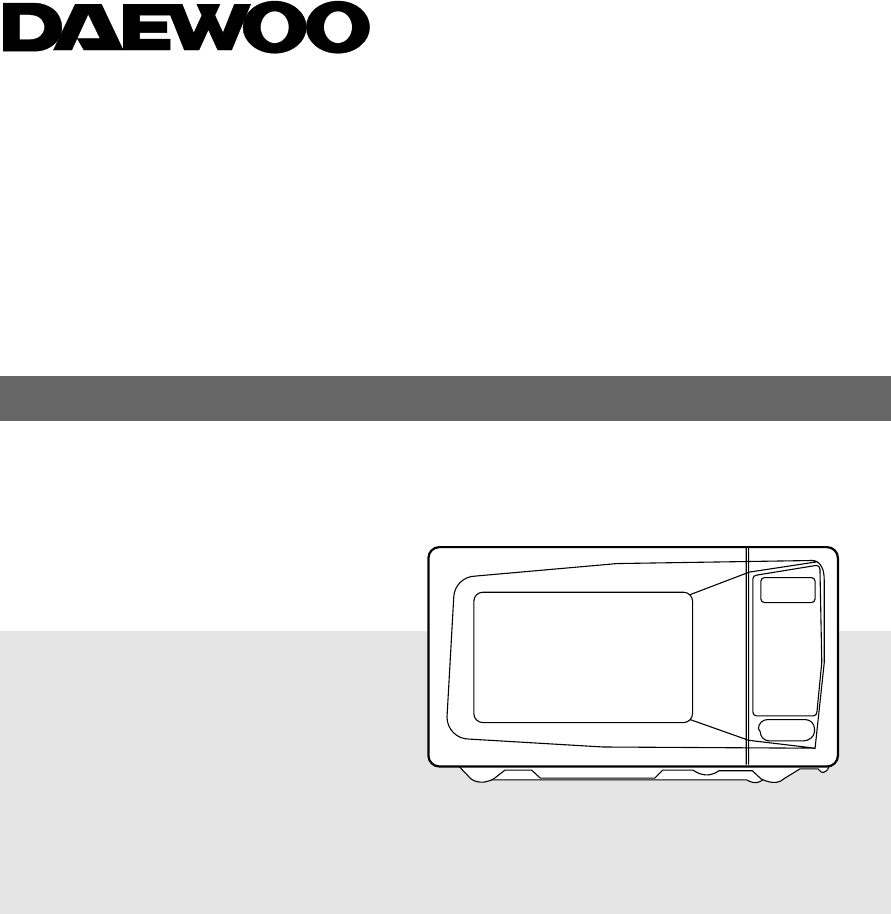
Before operating this oven, please read these instructions completely.
OPERATING
INSTRUCTIONS
MICROWAVE OVEN
KOR-86CH9

1
PRECAUTIONS TO AVOID POSSIBLE EXPOSURE
TO EXCESSIVE MICROWAVE ENERGY
(a) Do not attempt to operate this oven with the door open since open-door operation can
result in harmful exposure to microwave energy. It is important not to defeat or tamper
with the safety interlocks.
(b) Do not place any object between the oven front face and the door or allow soil or
cleaner residue to accumulate on sealing surfaces.
(c) Do not operate the oven if it is damaged. It is particularly important that the oven door
close properly and that there is no damaged to the: (1) door (bent), (2) hinges and
latches(broken or loosened), (3) door seals and sealing surfaces.
(d) The oven should not be adjusted or repaired by anyone except properly qualified service.
• IMPORTANT SAFETY INSTRUCTIONS.
• READ CAREFULLY AND KEEP FOR FUTURE REFERENCE. ............................................................................2
• FEDERAL COMMUNICATIONS COMMISSION RADIO FREQUENCY INTERFERENCE STATEMENT ...........3
• GROUNDING INSTRUCTIONS...............................................................................................................................3
• INSTALLATION ........................................................................................................................................................4
• FEATURES DIAGRAM.............................................................................................................................................5
• FEATURES DIAGRAM (CONTINUED) ...................................................................................................................6
• OPERATION PROCEDURE ....................................................................................................................................7
• CONTROLS..............................................................................................................................................................8
SETTING THE CLOCK ............................................................................................................................................8
TIME DEFROSTING ................................................................................................................................................8
WEIGHT DEFROSTING ..........................................................................................................................................9
COOKING IN ONE STAGE....................................................................................................................................10
COOKING IN TWO STAGES.................................................................................................................................10
KITCHEN TIMER MODE........................................................................................................................................11
SPEEDY COOK......................................................................................................................................................12
ONE TOUCH COOKING........................................................................................................................................12
LESS, MORE..........................................................................................................................................................14
CHILD SAFETY LOCK...........................................................................................................................................14
TO STOP THE OVEN WHILE THE OVEN IS OPERATING.................................................................................14
• CARE OF YOUR MICROWAVE OVEN.................................................................................................................15
• QUESTIONS AND ANSWERS ..............................................................................................................................16
• BEFORE YOU CALL FOR SERVICE ....................................................................................................................17
• CARE AND CLEANING .........................................................................................................................................17
• SPECIFICATIONS..................................................................................................................................................17
• COOKING INSTRUCTIONS ..................................................................................................................................18
• USE YOUR MICROWAVE OVEN SAFELY ..........................................................................................................19
• ARCING..................................................................................................................................................................19
• MICROWAVING PRINCIPLES ..............................................................................................................................20
• HOW MICROWAVES COOK FOOD .....................................................................................................................20
• CONVERSION CHARTS .......................................................................................................................................20
• COOKING TECHNIQUES......................................................................................................................................21
• DEFROSTING GUIDE............................................................................................................................................22
• COOKING & REHEATING CHART .......................................................................................................................23
• VEGETABLE CHART.............................................................................................................................................25
• RECIPES ................................................................................................................................................................26
TABLE OF CONTENTS

2
IMPORTANT SAFETY INSTRUCTIONS
When using electrical appliances, basic safety precautions should be followed, including the following:
WARNING-To reduce the risk of burns, electric shock, fire, injury to persons or exposure to excessive
microwave energy:
11. Read all instructions before using the appliance.
12. Read and follow the specific “PRECAUTIONS TO
AVOID POSSIBLE EXPOSURE TO EXCESSIVE
MICROWAVE ENERGY” found on page 1.
13. This appliance must be grounded. Connect only to
properly grounded outlet. See “GROUNDING
INSTRUCTIONS” found on page 3.
14. Install or locate this appliance only in accor-dance with
the provided installation instructions.
15. Some products such as whole eggs and sealed
containers - for example, closed glass jars-are able to
explode and should not be heated in this oven.
16. Use this appliance only for its intended use as described
in this manual. Do not use corrosive chemicals or vapors
in this appliance. This type of oven is specifically
designed to heat, cook, or dry food. It is not designed for
industrial or laboratory use.
17. Only allow children to use the oven without supervision
when adequate instructions have been given so that the
child is able to use the oven in a safe way and
understands the hazards of improper use.
18. Do not operate this appliance if it has a damaged cord or
plug, if it is not working properly, or if it has been
damaged or dropped.
19. This appliance should be serviced only by qualified
service personnel.
Contact nearest authorized service facility for
examination, repair or adjustment.
10. Do not cover or block any openings on the appliance.
11. Do not store this appliance outdoors. Do not use this
product near water — for example, near a kitchen sink, in
a wet basement, or near a swimming pool, or similar
locations.
12. Do not immerse cord or plug in water.
13. Keep cord away from heated surfaces.
14. Do not let cord hang over edge of table or counter.
15. Either:
a) When cleaning surfaces of door and oven that comes
together on closing the door, use only mild, non-
abrasive soaps or detergents applied with a sponge or
soft cloth , or
b) When separate cleaning instructions are provided, See
door surface cleaning instructions on.
16. To reduce the risk of fire in the oven cavity:
a) Do not overcook food. Carefully attend appliance when
paper, plastic, or other com-bustible materials are
placed inside the oven to facilitate cooking.
b) Remove wire twist-ties from paper or plastic bags
before placing bag in oven.
c) If materials inside the oven ignite, keep oven door
closed, turn oven off, and disconnect the power cord,
or shut off power at the fuse or circuit breaker panel.
d) Do not use the cavity for storage purposes. Do not
leave paper products, cooking utensils, or food in the
cavity when not in use.
17. Do not use this microwave oven to heat corrosive
chemicals (for example, sulfides and chlorides). Vapours
from such corrosive chemicals may interact with the
contact and springs of the safety interlock switches
thereby rendering them inoperable.
18. Keep the waveguide cover clean at all times.
Wipe the oven interior with a soft damp cloth after each
use. If you leave grease or fat anywhere in the cavity it
may overheat, smoke or even catch fire when next using
the oven.
19. Never heat oil or fat for deep frying as you cannot control
the temperature and doing so may lead to overheating
and fire.
20. Liquids, such as water, coffee, or tea are able to be
overheated beyond the boiling point without appearing to
be boiling due to surface tension of the liquid. Visible
bubbling or boiling when the container is removed from
the microwave oven is not always present. THIS COULD
RESULT IN VERY HOT LIQUIDS SUDDENLY BOILING
OVER WHEN A SPOON OR OTHER UTENSIL IS
INSERTED INTO THE LIQUID.
To reduce the risk of injury to persons:
a) Do not overheat the liquid.
b) Stir the liquid both before and halfway through heating
it
c) Do not use straight-sided containers with narrow
necks.
d) After heating, allow the container to stand in the
microwave oven for a short time before removing the
container.
e) Use extreme care when inserting a spoon or other
utensil into the container.
21. Do not operate the oven without the glass tray in place. Be
sure it is properly sitting on the rotating base.
SAVE THESE INSTRUCTIONS

3
FEDERAL COMMUNICATIONS COMMISSION
RADIO FREQUENCY INTERFERENCE STATEMENT
GROUNDING INSTRUCTIONS
This appliance must be grounded. In the event of an electrical short circuit, the grounding plug reduces
the risk of electric shock by providing an escape wire for electric current. This appliance is equipped
with a cord having a grounding wire with a grounding plug. The plug must be plugged into an outlet that
is properly installed and grounded.
WARNING:
This equipment generates and uses ISM frequency energy and if not installed and used
properly, that is in strict accordance with the manufacturer's instructions, may cause
interference to radio and television reception.
It has been type-tested and found to comply with limits for an ISM Equipment pursuant to part
18 of FCC Rules, which are designed to provide reasonable protection against such
interference in a residential installation.
However, there is no guarantee that interference will not occur in a particular installation.
If this equipment does cause interference to radio or television reception, which can be
determined by turning the equipment off and on, the user is encouraged to try to correct the
interference by one or more of the followings.
• Reorient the receiving antenna of radio or television.
• Relocate the Microwave oven with respect to the receiver.
• Move the microwave oven away from the receiver.
• Plug the microwave oven into a different outlet so that microwave oven and receiver are
on different branch circuits.
THE MANUFACTURER is not responsible for any radio or TV interference caused by
UNAUTHORIZED MODIFICATION to this microwave oven. It is the responsibility of the user to
correct such interference.
WARNING:
Improper use of the grounding can result in a risk of electric shock.
Consult a qualified electrician or serviceman if the grounding instructions are not completely
understood, or if doubt exists as to whether the appliance is properly grounded, and either :
(1) If it is necessary to use an extension cord, use only a 3-wire extension cord that has a 3-blade
grounding plug, and a 3-slot receptacle that will accept the plug on the appliance. The marked
rating of the extension cord shall be equal to or greater than the electrical rating of the
appliance. or
(2) Do not use an extension cord, if the power supply cord is too short, have a qualified electrician
or serviceman install an outlet near the appliance.
(3) Do not cut or remove the third (ground) prong from the power cord under any circumstances.
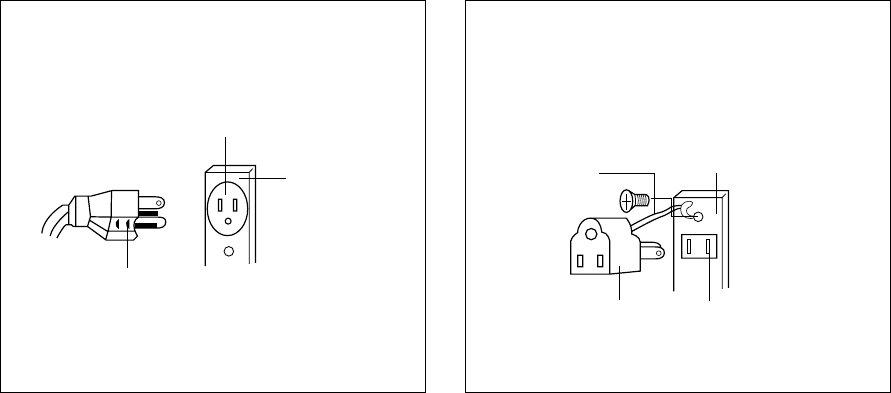
4
INSTALLATION
1. Examine the oven after unpacking.
Check for damage such as a misaligned door, broken door or dent in the cavity.
If any damage is visible, DO NOT INSTALL, and notify your dealer immediately.
2. Level, flat location.
Install the microwave oven on a level, flat surface.
3. Ventilation.
Do not block air vents. If they are blocked during operation, the oven may overheat and eventually
cause a failure.
For proper ventilation, allow 3 inches of space between oven top, sides, rear and adjacent surfaces.
4. Away from radio and TV sets.
Poor television reception and radio interference may result if the oven is located close to a TV, radio,
antenna, feeder, etc.
Place the oven as far from them as possible.
5. Away from heating appliances and water taps.
Keep the oven away from heat, steam or splashing liquids. These things can adversely affect oven
wiring and contacts.
6. Power supply.
This microwave oven requires a power supply of approximately 20 Amperes, 120 Volts, 60Hz
and a grounded outlet. A short power cord is provided to reduce the risk of the user becoming
entangled in or tripping over a longer cord. Longer cord sets or extension cords are available
and may be used if care is exercised in their use.
If an extension cord is used, the marked electrical rating of the cord should be at least as great
as the electrical rating of the oven.
The extension cord must be a grounding-type 3-wire cord. The longer cord should be arranged
so that it will not drape over the table top or counter where it can be pulled on by children or tripped
over unintentionally.
7. The minimum height of free space necessary above the top surface of the oven is 100mm.
When use 3-pronged plug
3-prong Receptacle
Receptacle
Box cover
3-prong plug
When use grounding adaptor, make sure
the receptacle box is fully grounded.
Receptacle Box Cover
Receptacle
Grounding
Lead
Grounding
Adaptor
“THE CANADIAN ELECTRICAL CODE DOES NOT ALLOW THE USE OF THE GROUNDING ADAPTOR”
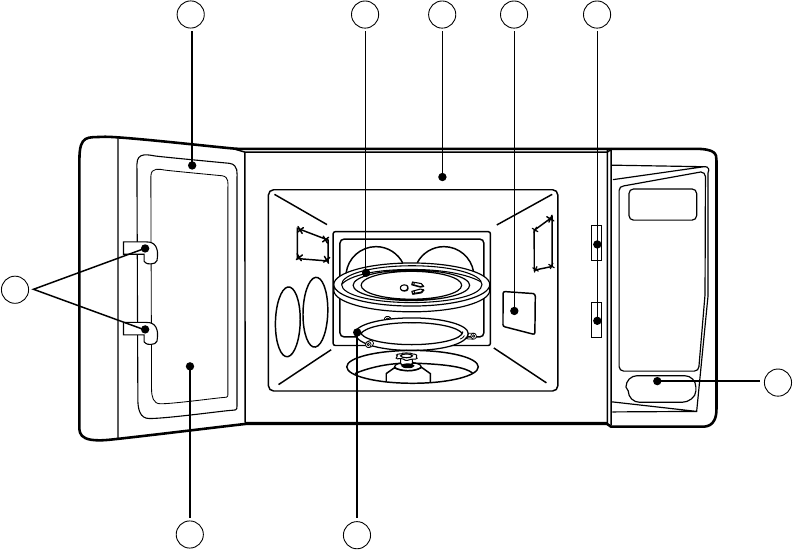
5
1. Door latch-When the door is closed it will
automatically shut off. If the door is opened
while the oven is operating, the magnetron
will automatically shut off.
2. Door seal-The door seal maintains the
microwave within the oven cavity and
prevents microwave leakage.
3. Oven cavity
4. Spatter shield-Protects the microwave
outlet from splashes of cooking foods.
5. Safety interlock system-Prevents the oven
from operating while the door is opened.
The oven will only operate with the door fully
closed. When the door is open, the oven turns
off and will only start again after the door is
closed.
6. Door release button-Pushing this button
stops oven operation and opens the door.
7. Glass cooking tray-Made of special heat
resistant glass. The tray must always be
in proper position before operating.
Do not cook food directly on the tray.
8. Roller guide-Supports the glass cooking tray.
9. Door screen-Allows viewing of food.
The screen is designed so that light
can pass through, but not the microwaves.
FEATURES DIAGRAM
2
9
1
6
5437
8
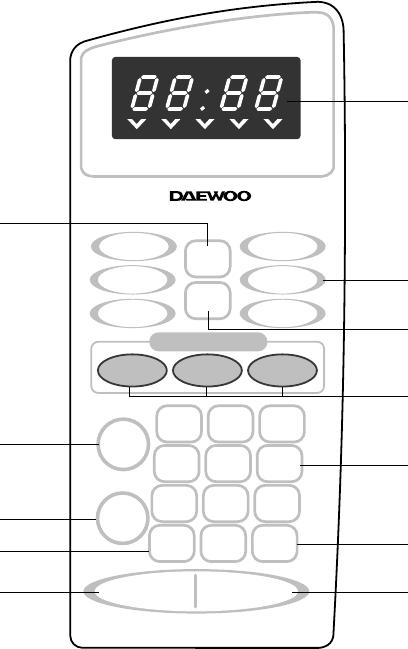
6
10. Time set pad-Used to set the cooking time
and the present time.
11. Display-Cooking time, power level, indicators
and present time are displayed.
12. One touch-Used to cook or reheat specific
quantities of food.
13. More-Used to add time to cooking.
14. Less-Used to remove time from cooking.
15. Auto Defrost-Used to defrost foods.(for
weight defrost)
16. Power-Used to set power level.
17. Defrost-Used to defrost foods.(for time
defrost)
18. Kitchen Timer-Used as a minute timer, to
delay the start of cooking, or to set a holding
time after cooking.
19. Clock-Used to set clock.
20. Stop/Clear-Used to stop the oven operation
or to delete the cooking data.
21. Start/Speedy cook-Used to start the oven
and also used to set a reheat time.
FEATURES DIAGRAM (continued)
M/W Def. Timer Lock lb
MORE
LESS
AUTO DEFROST
MEAT
POWER
DEF.
STOP/CLEAR
123
456
78
09
START/
SPEEDY COOK
KITCHEN
TIMER
CLOCK
POULTRY
FISH
BEVERAGE POPCORN
FRESH
VEGETABLE FROZEN
PIZZA
FROZEN
VEGETABLE DINNER
PLATE
MICROWAVE OVEN RANGE KOR-861H
⑪
⑫
⑩
⑲
⑳
⑰
⑯
⑬
⑱
⑭
⑮
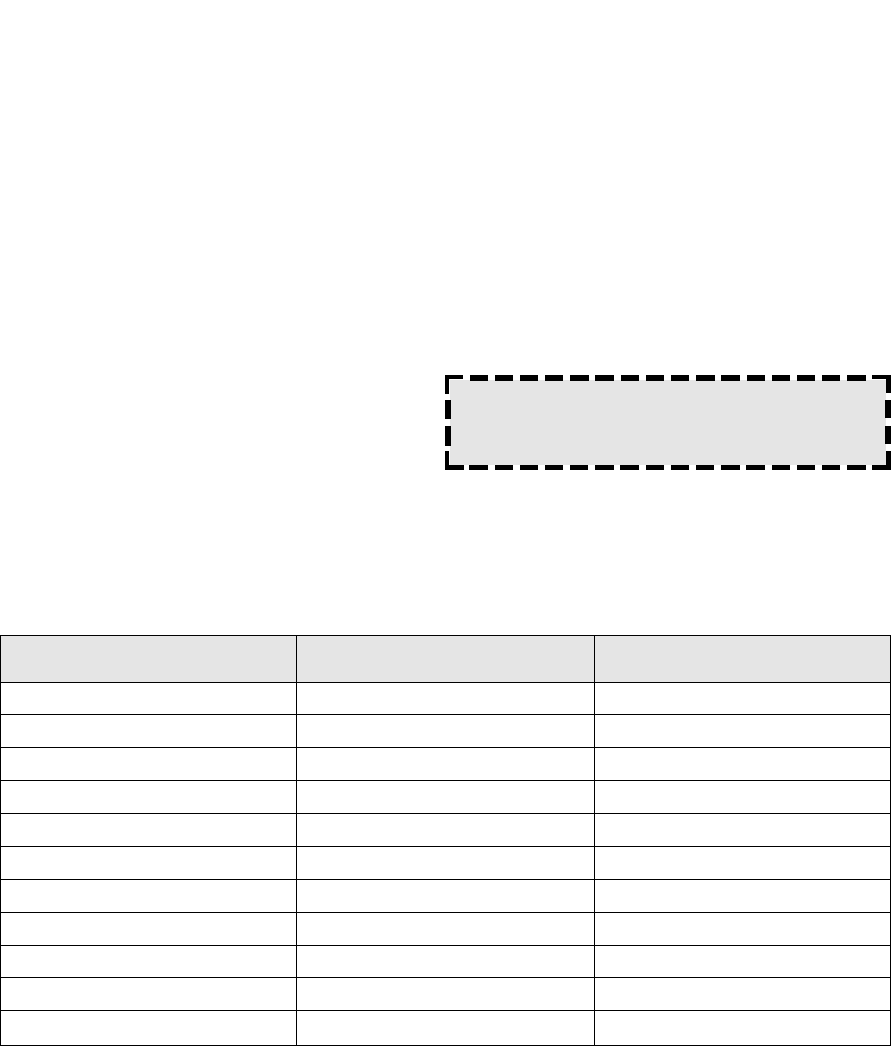
7
The oven light is on only when the microwave
oven is operating.
The oven door can be opened at any time
during operation by pushing the door release
button on the control panel. The oven will
automatically shut off.
Each time a pad is touched, a BEEP will sound
to acknowledge the touch.
The oven automatically cooks on full power
unless set to a lower power level.
The display will show “ : 0” when the oven is
plugged in.
Time clock returns to the present time when the
cooking time ends.
When the STOP/CLEAR pad is touched during the
oven operation, the oven stops cooking and all
information retained. To erase all information(except
the present time), touch the STOP/CLEAR pad
once more. If the oven door is opened during the
oven operation, all information is retained.
If the START pad is touched and the oven does
not operate, check the area between the door
and door seal for obstructions and make sure the
door is closed securely. The oven will not start
cooking until the door is completely closed or the
program has been reset.
OPERATION PROCEDURE
This section includes useful information about oven operation.
1. Plug power supply cord into a standard 3-pronged 20 Amp, 120V AC 60Hz power outlet.
2. After placing the food in a suitable container, open the oven door and put it on the glass tray.
The glass tray and roller guide must always be in place during cooking.
3. Shut the door. Make sure that it is firmly closed.
1
2
3
4
5
6
7
8
Make sure the oven is properly installed and
plugged into the electrical outlet.
WATTAGE OUTPUT CHART
• The power-level is set by touching the POWER pad. The chart shows the display, the power level and
the percentage of power.
Touch POWER pad Power level (Display) Approximate Percentage of Power
once P-HI 100%
twice P-90 90%
3 times P-80 80%
4 times P-70 70%
5 times P-60 60%
6 times P-50 50%
7 times P-40 40%
8 times P-30 30%
9 times P-20 20%
10 times P-10 10%
11 times P-00 0%
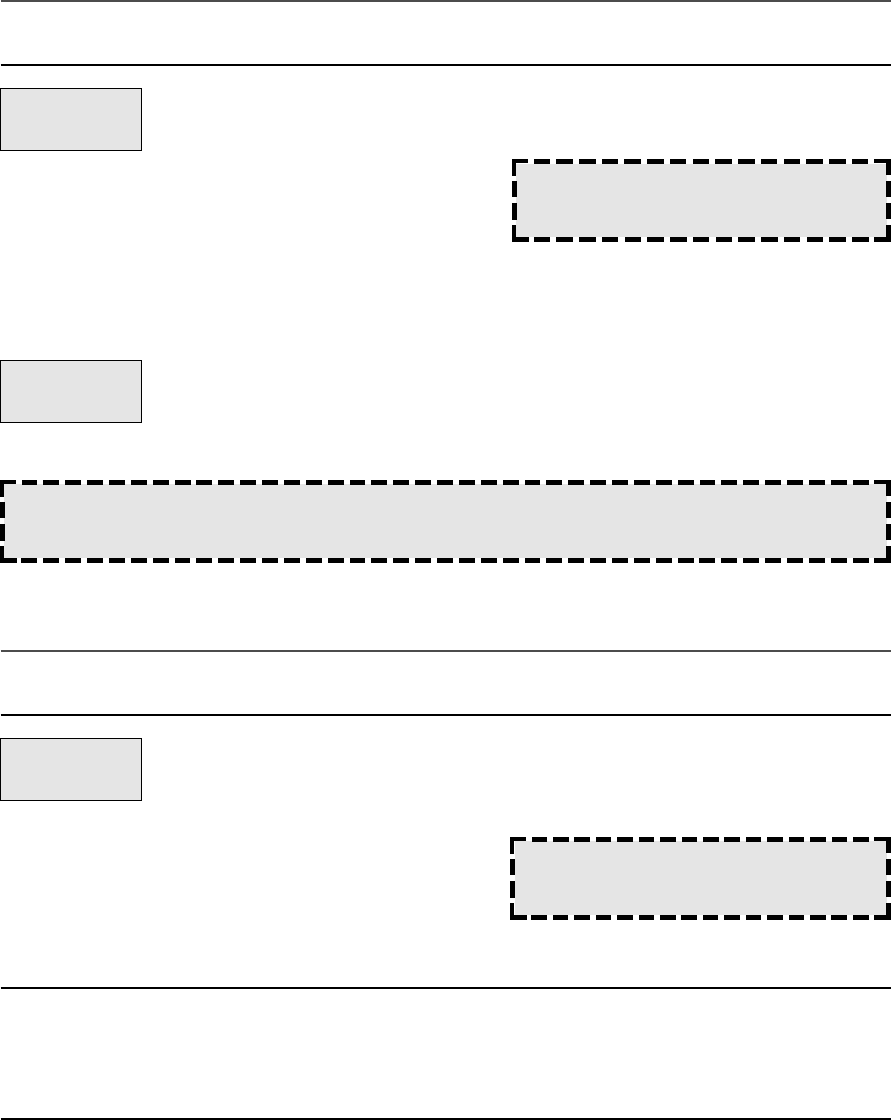
8
CONTROLS
SETTING THE CLOCK
When the oven is first plugged in, the display will flash “:0” and a tone will sound. If the AC power
ever goes off, the display shows “ : 0” when the power comes back on.
1. Touch CLOCK pad.
This is a 12 hour clock system.
2. Touch CLOCK pad once more.
This is a 24 hour clock system.
3. Enter the correct time of day by touching the time set
pads in sequence.
4. Touch CLOCK pad.
NOTE: If you attempt to enter an incorrect time, the time will not be set and a error signal tone will
sound. Touch the CLOCK pad and re-enter the time.
The display stops blinking, and the colon starts
blinking. If you selected 12 hour clock system,
this digital clock allows you to set from 1:00 to
12:59. If you selected 24 hour clock system, this
digital clock allows you to set from 0:00 to 23:59.
TIME DEFROSTING
When DEFROST is selected, the automatic cycle divides the defrosting time into periods of
alternating defrost and stand times by cycling on and off.
When you touch START pad, the DEF indicator starts blinking to show the oven is in the DEFROST mode.
The display counts down the time to show you how much defrosting time is left in the DEFROST mode.
The oven beeps during the defrosting cycle to signal that the food needs to be turned or rearranged. When
the defrosting time ends, you will hear 3 beeps.
NOTE : This oven has multiple clock
systems. If you want 12 hour
clock system, omit this step.
1. Touch DEFROST pad.
2. Touch the time set pads for the
desired defrosting time.
3. Touch START pad.
The DEF indicator lights and “ : 0” is displayed.
The display will show what you touched.
CLOCK
CLOCK
DEFROST
Note : Your oven can be programmed for
59 minutes 99 seconds. ( 59 : 99 )
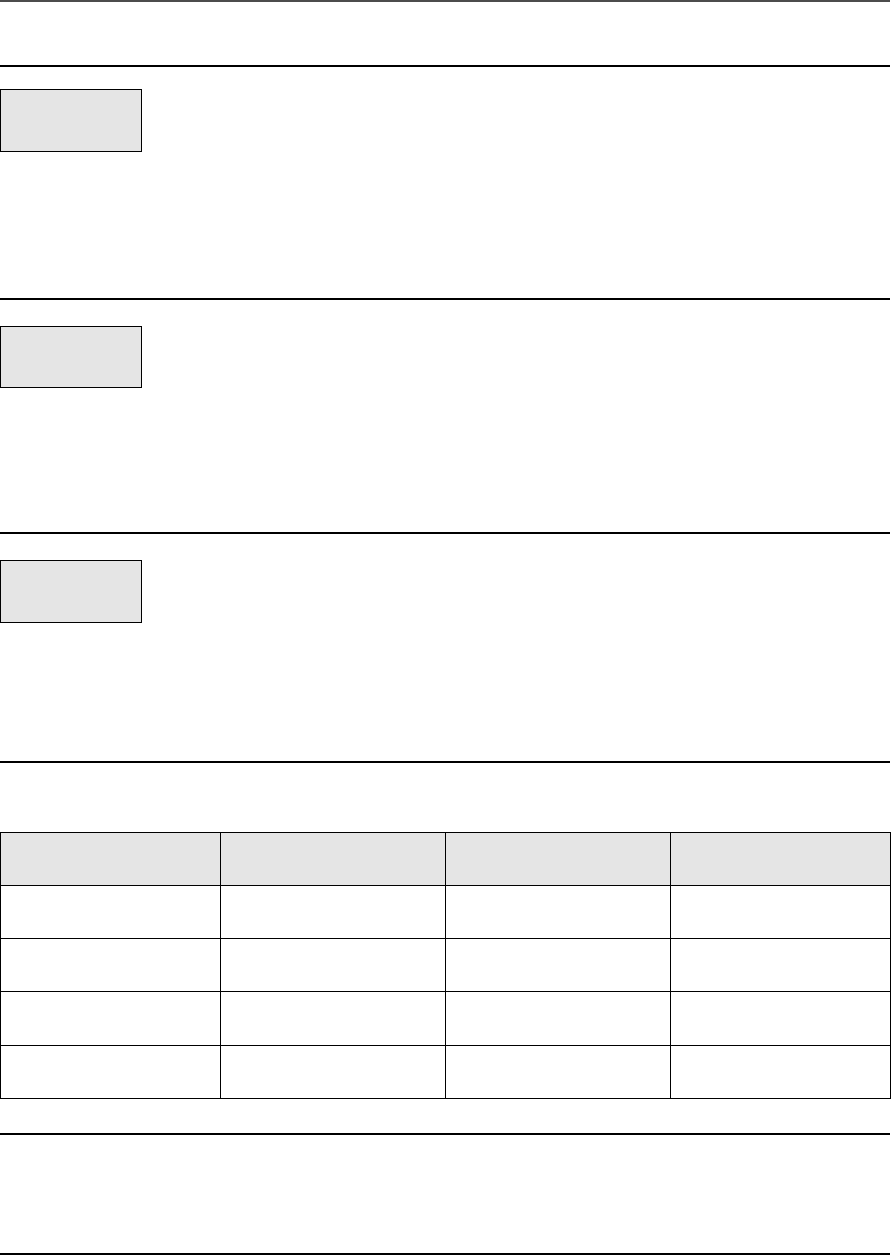
9
WEIGHT DEFROSTING
AUTO DEFROST lets you easily defrost food by eliminating guesswork in determining defrosting
time. Follow the steps below for easy defrosting.
1. Touch MEAT pad.
2. Select the desired defrosting weight.
(Refer to the weight defrost chart below.)
3. Touch START pad.
The lb indicator light and “ 1.0 ” is displayed.
The display will show what you touched.
MEAT DEFROSTING begins.
The defrosting time is automatically determined by the weight selected.
When you touch START pad, the lb indicator goes off and the DEF indicator blinks and the defrosting time
counts down in the display window. The oven beeps during the defrosting cycle to signal that the food
needs to be turned or rearranged. When the defrosting time ends, you will hear 3 beeps.
MEAT
1. Touch POULTRY pad.
2. Select the desired defrosting weight.
(Refer to the weight defrost chart below.)
3. Touch START pad.
The lb indicator light and “ 1.5 ” is displayed.
The display will show what you touched.
POULTRY DEFROSTING begins.
POULTRY
1. Touch FISH pad.
2. Select the desired defrosting weight.
(Refer to the weight defrost chart below.)
3. Touch START pad.
Touch pad MEAT POULTRY FISH
once 1.0 lb 1.5 lb 0.5 lb
twice 1.5 lb 2.0 lb 1.0 lb
3 times 2.0 lb 2.5 lb 1.5 lb
4 times 2.5 lb 3.0 lb 2.0 lb
* WEIGHT DEFROST CHART
The lb indicator light and “ 0.5 ” is displayed.
The display will show what you touched.
FISH DEFROSTING begins.
FISH
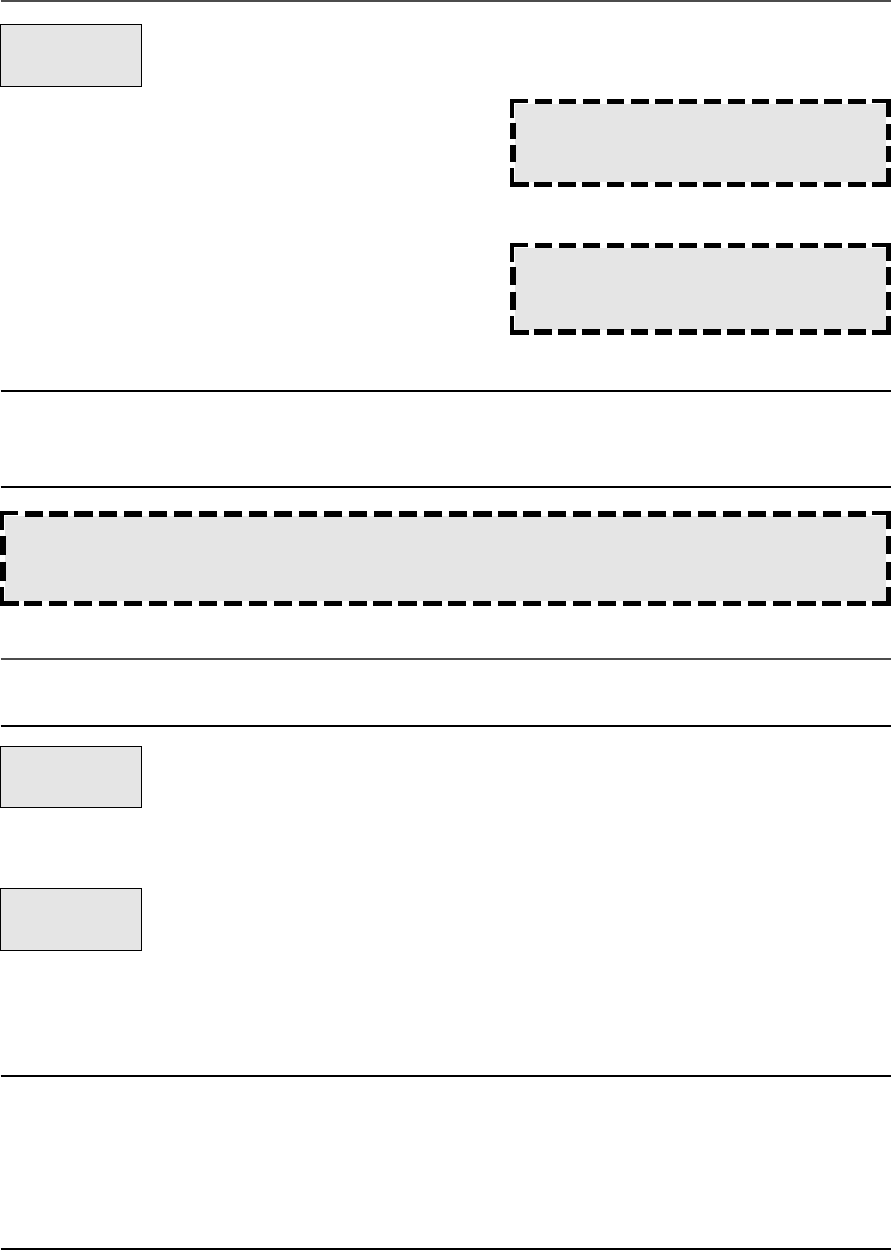
10
COOKING IN TWO STAGES
All recipes require the frozen foods to be defrosted fully before cooking.
This oven can be programmed to automatically defrost foods before cooking.
When you touch START pad, the DEF and M/W indicators come on to confirm the power levels
selected. The DEF indicator starts blinking to show you that the oven is in DEFROST mode.
The display counts down the time remaining in DEFROST mode. When the oven beeps, turn over,break
apart and/or redistribute the food. At the end of DEFROST mode, the oven will beep and start M/W cook.
The DEF indicator goes off and the M/W indicator starts blinking. The display counts down the time
remaining in M/W mode. When M/W cook ends, you will hear 3 beeps.
1. Touch DEFROST pad.
2. Touch the time set pads for the defrosting time you want.
4. Touch the time set pads for the desired cooking time.
5. Touch START pad.
The DEF indicator lights and “ : 0” is displayed.
The display will show what you touched.
The M/W indicator lights and “P-HI” is displayed.
The display will show what you touched.
This example shows power level 5.
The display will show what you touched.
COOKING IN ONE STAGE
When you touch START pad, the M/W indicator starts blinking to show the oven is cooking.
The display counts down the time to show how much cooking time is left. When the cooking time ends, you
will hear 3 beeps.
1. Touch POWER pad.
(Select the desired power
level.)
X 6
2. Touch the time set pads for the cooking time.
3. Touch START pad.
The M/W indicator lights.
The display will show what you touched.
This example shows power level 5.
The display will show what you touched.
NOTE: Using lower power levels increases the cooking time which is recommended for foods such
as cheese, milk and slow cooking of meats.
Note : If steps 1 and 2 are omitted,
the oven will cook at full power.
Note : Your oven can be programmed for
59 minutes 99 seconds. ( 59 : 99 )
POWER
DEFROST
POWER 3.Touch POWER pad.
(Select the desired power level. )
X 6
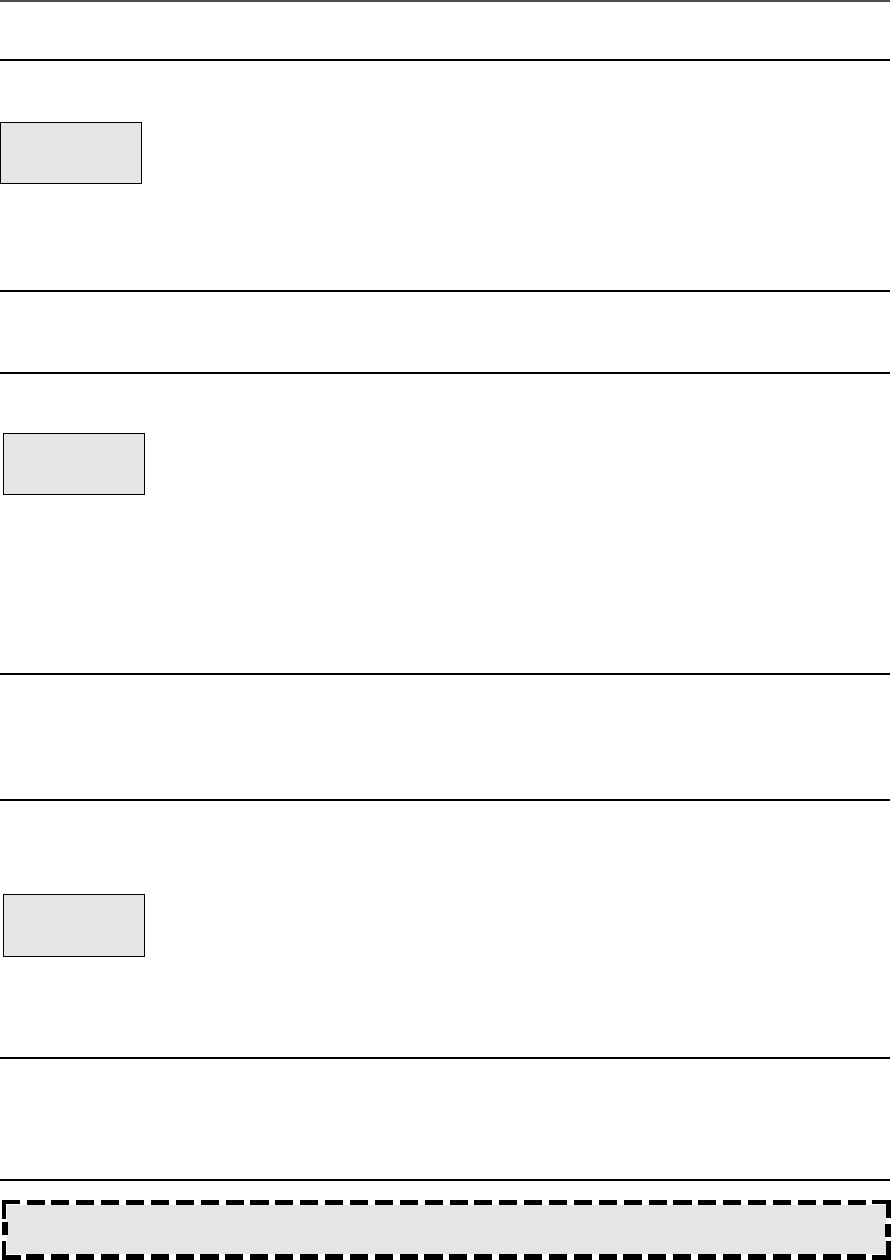
11
1. Program the desired cooking time.
3. Press the amount of time you want the oven to hold.
4. Touch START pad.
The M/W indicator starts blinking and the display counts down the time remaining in M/W mode.
When the M/W cook ends, the oven will beep. The M/W indicator goes off and TIMER indicator
starts blinking. The display counts down the time remaining in KITCHEN TIMER mode. When the
KITCHEN TIMER mode ends, you will hear 3 beeps.
1. Touch KITCHEN TIMER pad.
2. Press the amount of time you want to delay.
3. Program the desired power level and cooking time for food
to be cooked.
4. Touch START pad.
When you touch START pad, the TIMER indicator starts blinking and the display counts down the
time remaining in KITCHEN TIMER mode. When KITCHEN TIMER mode ends, the oven will beep.
The TIMER indicator goes off and M/W indicator starts blinking. The display counts down the time
remaining in M/W mode. When M/W cook ends, you will hear 3 beeps.
The TIMER indicator lights and “ : 0 ” is
displayed.
The display will show what you touched.
The M/W indicator lights and the selected
power level & cooking time are displayed.
Note : Your oven can be programmed for 59 minutes 99 seconds. ( 59 : 99 )
KITCHEN
TIMER
KITCHEN TIMER MODE
Timer operates as a minute timer, can be set to delay cooking and used to set a holding time after cooking.
However delay cooking can not be programmed for defrost. Timer operates without microwave energy.
1. Touch KITCHEN TIMER
pad.
2. Press the amount of time you want to count down.
3. Touch START pad.
The TIMER indicator starts blinking and the display counts down the time remaining in KITCHEN
TIMER mode. When KITCHEN TIMER mode ends, you will hear 3 beeps.
The TIMER indicator lights and “ : 0” is
displayed.
The display will show what you touched.
KITCHEN
TIMER
HOW TO USE AS A MINUTE TIMER
HOW TO USE TO DELAY THE START OF COOKING
2. Touch KITCHEN TIMER pad.
The M/W indicator lights and the selected
time is displayed.
The TIMER indicator lights and “ : 0” is
displayed.
The display will show what you touched.
KITCHEN
TIMER
HOW TO USE TO SET A HOLDING TIME
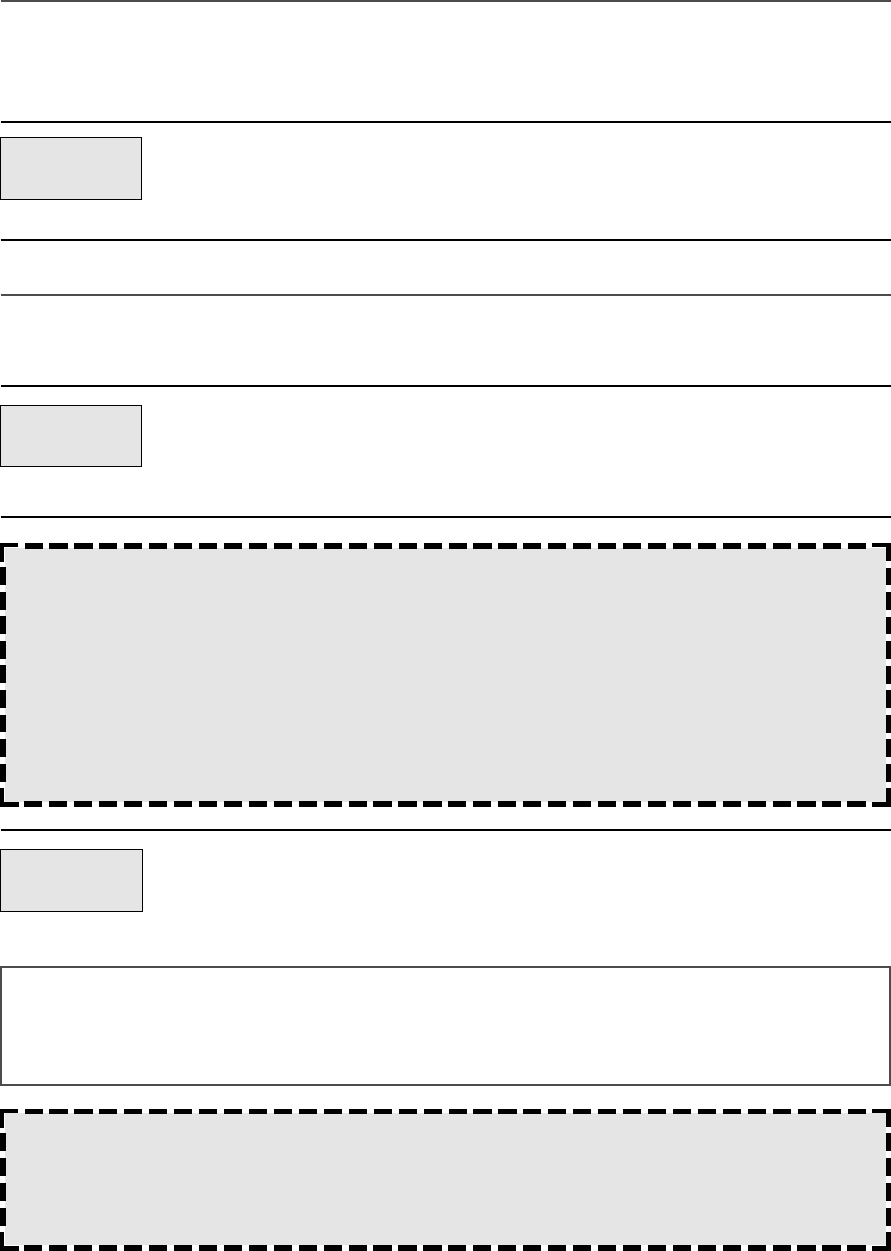
12
1. Touch SPEEDY COOK pad. When you touch SPEEDY COOK, ":30" is
displayed.
After 1.5 seconds, the oven starts reheating.
POPCORN
SPEEDY
COOK
1. Touch POPCORN pad once
for 3.5 oz bag. When you touch POPCORN pad once,
“ 3.5 ” is displayed.
After 1.5 seconds, the display is changed into
cooking time and the oven starts cooking.
FROZEN
PIZZA
1. Touch FROZEN PIZZA pad
once for 7 oz pizza or
twice for 14 oz pizza.
When you touch FROZEN PIZZA pad once,
“ 7 ” is displayed.
After 1.5 seconds, the display is changed into
the cooking time and the oven starts cooking.
* FROZEN PIZZA *
• 7 oz : Touch FROZEN PIZZA pad once.
• 14 oz : Touch FROZEN PIZZA pad twice within 1.5 seconds.
NOTE: 1 Use only one frozen pizza at a time
2. Use only frozen pizza made for microwave ovens.
3. If the cheese of frozen pizza does not melt sufficiently, cook a few seconds longer.
4. Some brands of frozen pizza may require more or less cooking time.
NOTE: 1. Use prepackaged room-temperature microwave popcorn.
2. Place bag in oven according to manufacturer’s directions.
3. Pop only one bag at a time.
4. After popping, open bag carefully: popcorn and steam are extremely hot.
5. Do not reheat unpopped kernels or reuse bag.
6. Do not leave oven unattended while popping popcorn.
CAUTION: If prepackaged popcorn is of a different weight than the recommended weight, do not use
the popcorn pad. Follow the manufacturer instruction.
SPEEDY COOK
SPEEDY COOK allows you to reheat for 30 seconds at 100% (full power) by simply touching the
SPEEDY COOK pad.
By repeatedly touching the SPEEDY COOK pad, you can also extend reheating time to 5 minutes by
30 second increments.
ONE TOUCH COOKING
One touch cook allows you to cook or reheat many of your favorite foods by touching just one pad.
To increase quantity, touch the chosen pad until number in display is same as the desired quantity to cook.
(except for POPCORN)

13
ONE TOUCH COOKING (continued)
1. Touch BEVERAGE pad once
for 1 cup, twice for 2 cups or
three times for 3 cups.
BEVERAGE
When you touch BEVERAGE pad once, “ 1 ” is
displayed.
After 1.5 seconds, the display is changed into
cooking time and the oven starts cooking.
1. Touch DINNER PLATE pad
once for 12 oz of dinner plate
or twice for 15 oz of dinner
plate.
DINNER
PLATE
When you touch DINNER PLATE pad once,
“12” is displayed.
After 1.5 seconds, the display is changed into
cooking time and the oven starts cooking.
* BEVERAGE* (200ml/cup)
• 1 cup (mug) : Touch BEVERAGE pad once.
• 2 cups (mugs) : Touch BEVERAGE pad twice within 1.5 seconds.
• 3 cups (mugs) : Touch BEVERAGE pad three times within 1.5 seconds.
* DINNER PLATE *
• 12 oz : Touch DINNER PLATE pad once.
• 15 oz : Touch DINNER PLATE pad twice within 1.5 seconds.
1. Touch FRESH VEGETABLE
pad once for 7 oz of fresh
vegetable or twice for 14 oz of
fresh vegetable.
FRESH
VEGETABLE
When you touch FRESH VEGETABLE pad
once, “7” is displayed.
After 1.5 seconds, the display is changed into
cooking time and the oven starts cooking.
* FRESH VEGETABLE *
• 7 oz : Touch FRESH VEGETABLE pad once.
• 14 oz : Touch FRESH VEGETABLE pad twice within 1.5 seconds.
1. Touch FROZEN VEGETABLE
pad once for 7 oz of frozen
vegetable or twice for 14 oz of
frozen vegetable.
FROZEN
VEGETABLE
When you touch FROZEN VEGETABLE pad
once, “7” is displayed.
After 1.5 seconds, the display is changed into
cooking time and the oven starts cooking.
* FROZEN VEGETABLE *
• 7 oz : Touch FROZEN VEGETABLE pad once.
• 14 oz : Touch FROZEN VEGETABLE pad twice within 1.5 seconds.

14
LESS, MORE
To alter one touch cooking or cooking time while oven is in operation, use LESS or MORE.(except for
defrosting)
Touch LESS/MORE pad to decrease/increase the one touch cooking time in multiples of 10 seconds.
The overall one touch cooking time can be increased to a maximum of 59 minutes 50 seconds.
Touch LESS/MORE pad to decrease/increase the cooking time in multiples of 1 minute.
The overall cooking time can be increased to a maximum of 59 minutes.
CHILD SAFETY LOCK
The safety lock prevents unwanted oven operation such as by small children.
To set, press and hold STOP/CLEAR pad for 3 seconds, a beep sounds and LOCK indicator lights.
To cancel, press and hold STOP/CLEAR pad for 3 seconds, a beep sounds and LOCK indicator goes off.
TO STOP THE OVEN WHILE THE OVEN IS OPERATING
1. Touch STOP/CLEAR pad.
• You can restart the oven by touching START pad.
• Touch STOP/CLEAR pad once more to erase all instructions.
• You must enter in new instructions.
2. Open the door.
• You can restart the oven by closing the door and touching STARTpad .
NOTE: Oven stops operating when door is opened.
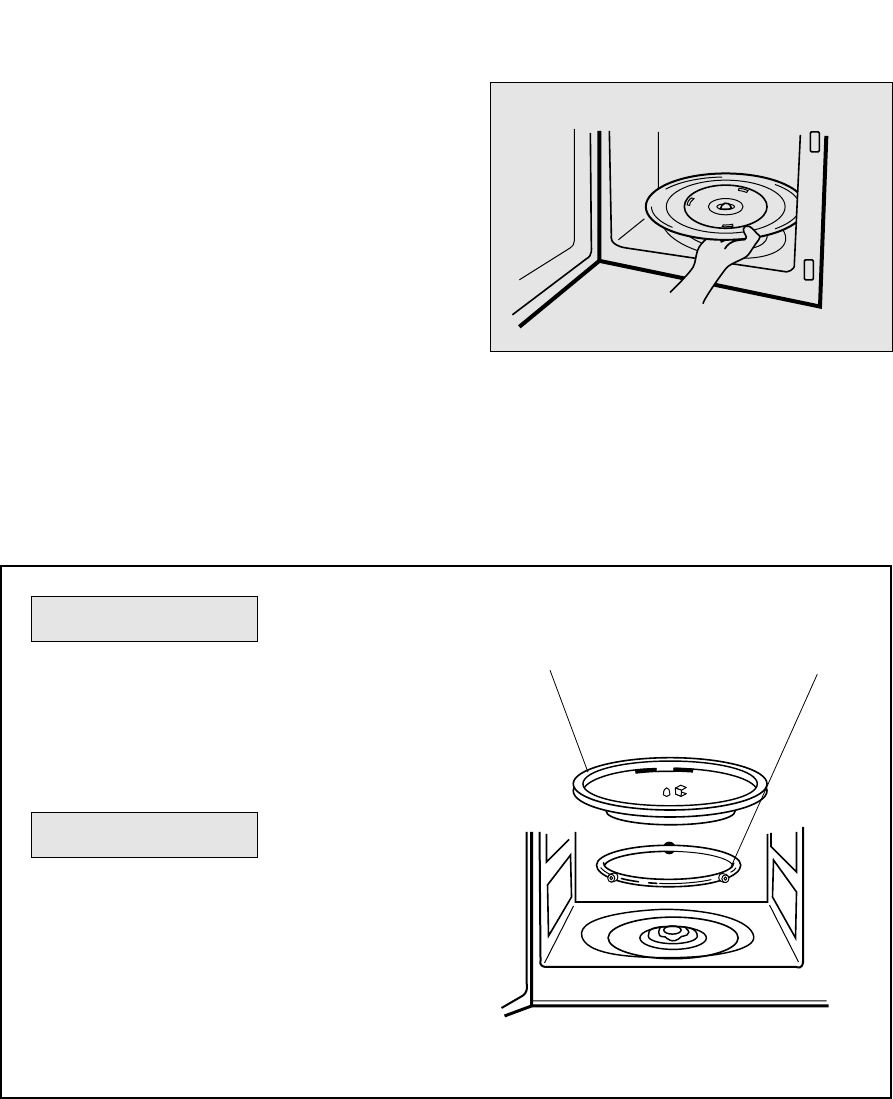
15
CARE OF YOUR MICROWAVE OVEN
Turn the oven off before cleaning.
Keep the inside of the oven clean. When food
spatters or spilled liquids adhere to oven
walls, wipe with a damp cloth. Mild detergent
may be used if the oven gets very dirty. The
use of harsh detergent or abrasives is not
recommended.
The outside oven surface should be cleaned
with soap and water, rinsed and dried with a
soft cloth. To prevent damage to the operating
parts inside the oven, water should not be
allowed to seep into the ventilation openings.
If the Control Panel becomes wet, clean with
a soft, dry cloth. Do not use harsh detergents
or abrasives on Control Panel.
If steam accumulates inside or around the
outside of the oven door, wipe with a soft
cloth. This may occur when the microwave
oven is operated under high humidity
conditions and in no way indicates
malfunction of the unit.
It is occasionally necessary to remove the
glass tray for cleaning. Wash the tray in warm
sudsy water or in a dishwasher.
The roller guide and oven cavity floor should
be cleaned regularly to avoid excessive noise.
Simply wipe the bottom surface of the oven
with mild detergent water or window cleaner
and dry. The roller guide may be washed in
mild sudsy water.
1
2
3
4
5
6
7
ROLLER GUIDE
Glass Tray Roller Guide
The ROLLER GUIDE and oven floor should
be cleaned frequently to prevent excessive
noise.
The ROLLER GUIDE MUST ALWAYS be
used for cooking together with the Glass Tray.
1
2
GLASS TRAY
DO NOT operate the oven without the Glass Tray
in place.
DO NOT use any other Glass Tray with this oven.
If Glass Tray is hot, ALLOW TO COOL before
cleaning or placing it in water.
DO NOT cook directly on the Glass Tray.
(Except for popcorn)
1
2
3
4
16
* Q :I accidentally ran my microwave oven
without any food in it. Is it damaged?
* A : Running the oven empty for a short time will
not damage the oven. However, it is not
recommended.
* Q :Can the oven be used with the glass tray
or roller guide removed?
* A : No. Both the glass tray and roller guide must
always be used in the oven before cooking.
* Q :Can I open the door when the oven is
operating?
* A : The door can be opened anytime during the
cooking operation. Then microwave energy
will be instantly switched off and the time
setting will maintain until the door is closed.
* Q :Why do I have moisture in my microwave
oven after cooking?
* A : The moisture on the side of your microwave
oven is normal. It is caused by steam from
cooking food hitting the cool oven surface.
* Q :Does microwave energy pass through
the viewing screen in the door?
* A : No. The metal screen bounces back the
energy to the oven cavity. The holes are
made to allow light to pass through. They do
not let microwave energy pass through.
* Q : Why do eggs sometimes pop?
* A : When baking or poaching eggs, the yolk
may pop due to steam build-up inside the
yolk membrane. To prevent this, simply
pierce the yolk with a toothpick before
cooking. Never cook eggs without piercing
their shells.
* Q : Why this standing time recommended
after the cooking operation has been
completed?
* A : Standing time is very important.
With microwave cooking, the heat is in the
food, not in the oven. Many foods build up
enough internal heat to allow the cooking
process to continue, even after the food is
removed from the oven. Standing time for
joints of meat, large vegetables and cakes is
to allow the inside to cook completely,
without overcooking the outside.
* Q :What does “standing time” mean?
* A : “Standing time” means that food should be
removed from the oven and covered for
additional time to allow it to finish cooking.
This frees the oven for other cooking.
* Q : Why does my oven not always cook as
fast as the microwave cooking guide
says?
* A : Check your cooking guide again, to make
sure you’ve followed directions exactly ; and
to see what might cause variations in
cooking time. Cooking guide times and heat
settings are suggestions, to help prevent
over-cooking... the most common problem in
getting used to a microwave oven.
Variations in the size, shape and weights
and dimensions could require longer cooking
time. Use your own judgement along with
the cooking guide suggestions to check
whether the food has been properly cooked
just as you would do with a conventional
cooker.
* Q : Will the microwave oven be damaged if it
operates while empty?
* A : Yes. Never run it empty.
* Q : Can I operate my microwave oven
without the turntable or turn the turntable
over to hold a large dish?
* A : No. If you remove or turn over the turntable,
you will get poor cooking results. Dishes
used in your oven must fit on the turntable.
* Q : Is it normal for the turntable to turn in
either direction?
* A : Yes. The turntable rotates clockwise or
counterclockwise, depending on the rotation
of the motor when the cooking cycle begins.
* Q : Can I pop popcorn in my microwave
oven? How do I get the best results?
* A : Yes. Pop packaged microwave popcorn
following manufacture’s guidelines. Do not
use regular paper bags. Use the “listening
test” by stopping the oven as soon as the
popping slows to a “pop” every 1 or 2
seconds. Do not repop unpopped kernels.
Do not pop popcorn in glass cookware.
QUESTIONS AND ANSWERS

17
POWER SUPPLY 120V 60Hz 20A, SINGLE PHASE WITH EARTHING
MICROWAVE POWER CONSUMPTION 1400 W
MICROWAVE ENERGY OUTPUT 1000 W
MICROWAVE FREQUENCY 2450MHz
OUTSIDE DIMENSIONS (W X H X D) 495 X 294 X 388mm(19.5 X 11.6 X 15.3 in)
CAVITY DIMENSIONS (W X H X D) 320 X 238 X 338mm(12.6 X 9.4 X 13.3 in)
NET WEIGHT APPROX. 13Kg (28.7 lbs)
TIMER 59 min. 99 sec.
POWER SELECTIONS 10 LEVELS
* Specifications are subject to change without notice.
SPECIFICATIONS
CARE AND CLEANING
Although your oven is provided with safety features, it is important to observe the following:
1. It is important not to defeat or tamper with safety
interlocks.
2. Do not place any object between the oven front
face and the door or allow residue to accumulate
on sealing surfaces. Wipe the sealing area
frequently with a mild detergent, rinse and dry.
Never use abrasive powders or pads.
3. When opened, the door must not be subjected to
strain, for example, a child hanging on an opened
door or any load could cause the oven to fall
forward to cause injury and also damage to the
door. Do not operate the oven if it is damaged,
until it has been repaired by a competent service
technician. It is particularly important that the
oven closes properly and that there is no damage
to the:
i) Door(bent)
ii) Hinges and Hookes(broken or loosened)
iii) Door seals and sealing surfaces.
4. The oven should not be adjusted or repaired by
anyone except a properly competent service
technician.
5. The oven should be cleaned regularly and any
food deposits removed;
6. Failure to maintain the oven in a clean condition
could lead to deterioration of the surface that
could adversely affect the life of the appliance and
possibly result in a hazardous situation.
BEFORE YOU CALL FOR SERVICE
Refer to following checklist, you may prevent an unnecessary service call.
* The oven doesn’t work :
1. Check that the power cord is securely plugged in.
2. Check that the door is firmly closed.
3. Check that the cooking time is set.
4. Check for a blown circuit fuse or tripped main
circuit breaker in your house.
* Sparking in the cavity;
1. Check utensils. Metal containers or dishes with
metal trim should not be used.
2. Check that metal skewers or foil does not touch
the interior walls.
If there is still a problem, contact the service station.
A list of these stations is included in the oven.
DO NOT ATTEMPT TO SERVICE THE OVEN YOURSELF !

18
COOKING INSTRUCTIONS
Utensil Guide
Only use utensils that are suitable for use in microwave ovens.
To cook food in the microwave oven, the microwaves must be able to penetrate the food, without
being reflected or absorbed by the dish used. Care must therefore be taken choosing the utensil. If the
utensil is marked microwave-safe, you do not need to worry. The following table lists various of utensil
and indicates whether and how they should be used in a microwave oven.
●: Recommended use
▲ : Limited Use
✕: Not Recommended
Utensil Safe Comments
Aluminium foil
Crust plate
China and earthenware
Disposable polyester
cardboard dishes
Fast-food packaging
• Polystyrene cups containers
• Paper bags or newspaper
• Recycled paper or metal trims
Glassware
• Oven-to-table ware
• Fine glassware
• Glass jars
Metal
• Dishes
• Freezer bag twist ties
Paper
• Plates, cups, napkins and
Kitchen paper
• Recycled paper
Plastic
• Containers
• Cling film
• Freezer bags
Wax or grease-proof paper
Can be used in small quantities to protect areas against
overcooking. Arcing can occur if the foil is too close to
the oven wall or if too much foil is used.
Do not preheat for more than 8minutes.
Porcelain, pottery, glazed earthenware and bone china
are usually suitable, unless deco-rated with a metal trim.
Some frozen foods are packaged in these dishes.
Can be used to warm food. Overheating may cause the
polystyrene to melt.
May catch fire.
May cause arcing.
Can be used, unless decorated with a metal trim.
Can be used to warm foods or liquids.
Delicate glass may break or crack if heated suddenly.
Must remove the lid. Suitable for warming only.
May cause arcing or fire.
For short cooking times and warming. Also to absorb
excess moisture.
May cause arcing.
Particularly if heat-resistant thermoplastic. Some other
plastics may warp or discolour at high temperatures. Do
not use Melamine plastic.
Can be used to retain moisture. Should not touch the
food.
Take care when removing the film as hot steam will
escape.
Only if boilable or oven-proof. Should not be airtight.
Prick with a fork, if necessary.
Can be used to retain moisture and prevent spattering.
▲
●
●
●
●
✕
✕
●
●
●
✕
✕
●
✕
●
●
▲
●
19
USE YOUR MICROWAVE OVEN SAFELY
General Use
Do not attempt to defeat or tamper with safety
interlocks.
Do not place any object between the oven front frame
and the door or allow residue to build up on sealing
surfaces. Wipe with a mild detergent, rinse and dry.
Never use abrasive powders or pads.
Do not subject the oven door to strain or weight such
as a child hanging on an open door.
This could cause the oven to fall forward resulting in
injury to you and damage to the oven.
Do not operate the oven if door seals or sealing
surfaces are damaged; or if door is bent; or if hinges
are loose or broken.
Do not operate the oven empty. This will damage the
oven.
Do not attempt to dry clothes, newspapers or other
materials in the oven. They may catch on fire.
Do not use recycled paper products as they may
contain impurities which may cause sparks or fires.
Do not hit or strike the control panel with hard objects.
This can damage the oven.
Food
Never use your microwave oven for home canning.
The oven is not designed for proper home canning.
Improperly canned food may spoil and be dangerous
to consume.
Always use the minimum recipe cooking time. It is
better to undercook rather than overcook foods.
Undercooked foods can be returned to the oven for
more cooking. If food is overcooked, nothing can be
done.
Heat small quantities of food or foods with low
moisture carefully. These can quickly dry out, burn or
catch on fire.
Do not heat eggs in the shell. Pressure may build up
and eggs can explode.
Potatoes, apples, egg yolks and sausages are
examples of food with non-porous skins.
These must be pierced before cooking to prevent
bursting.
Do not attempt to deep fat fry in your microwave oven.
Always allow a starding time of at least 20 seconds
after the oven has been switched off to allao the
temperature to even out, stir during heating, if
necessary, and ALWAYS stir after heating. To prevent
eruptive boiling and possible scalding, you should put
a spoon or glass stick into the beverages and stir
before, during and after heating.
Do not leave the oven unattended while popping corn.
Do not pop corn in a paper bag unless it is the
commercially prepared Microwave Popcorn product.
The kernels can overheat and ignite a brown paper
bag.
Do not put packaged Microwave Popcorn bags
directly on the oven tray. Place the package on a
microwave safe glass or ceramic plate to avoid
overheating and cracking the oven tray.
Do not exceed the Microwave Popcorn manufacturers
suggested popping time.
Longer popping does not yield more popcorn but it
can result in scorch, burn of fire. Remember, the
Popcorn bag and tray can be too hot to handle.
Remove with caution and use pot holders.
ARCING
If you see arcing, turn the timer knob the point “OFF” and correct the problem.
Arcing is the microwave term for sparks in the
oven.
Arcing is caused by:
• Metal or foil touching the side of the oven.
• Foil not molded to food (upturned edges act like
antennas).
• Metal, such as twist-ties, poultry pins, or gold
rimmed dishes, in the microwave.
• Recycled paper towels containing small metal
pieces being used in the microwave.
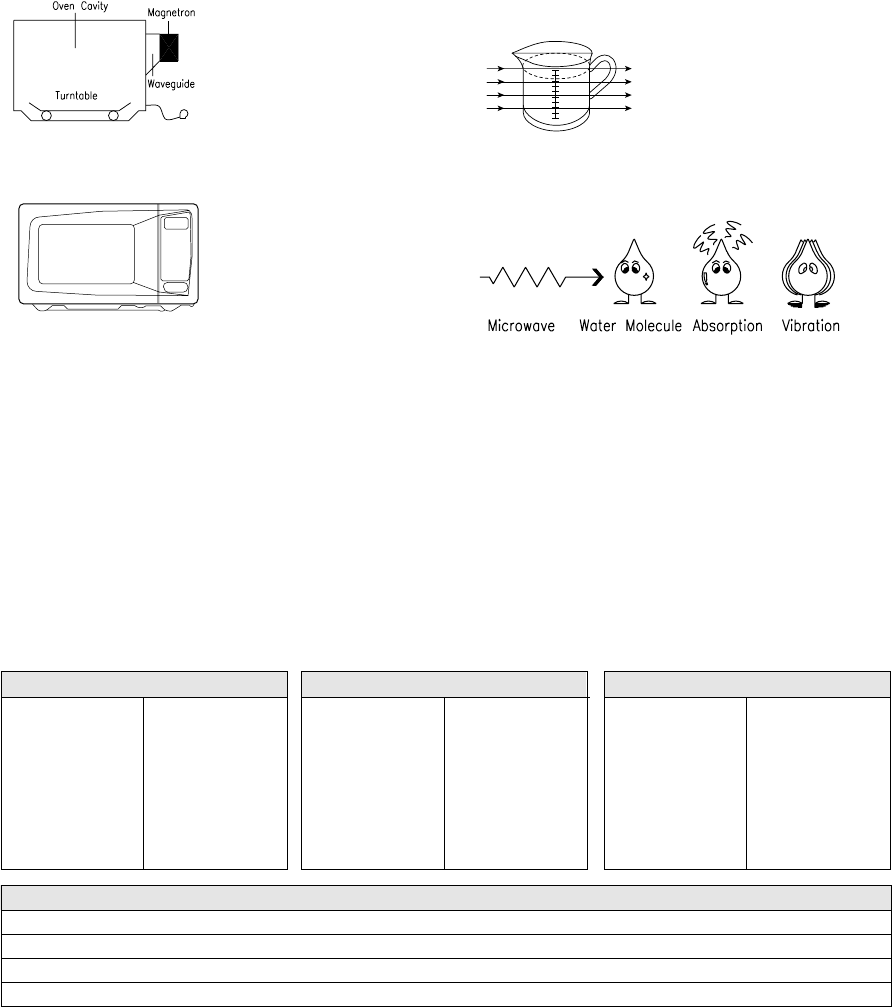
20
MICROWAVING PRINCIPLES
Microwave energy has been used in this country to cook and reheat food since early experiments with
RADAR in World War ll. Microwaves are present in the atmosphere all the time, both naturally and manmade
sources. Manmade sources include radar, radio, television, telecommunication links and car phones.
CONVERSION CHARTS
In a microwave oven,
electricity is converted
into microwave by the
MAGNETRON.
REFLECTION The microwaves bounce
off the metal walls and
the metal door screen.
TRANSMISSION Then they pass through
the cooking containers to
be absorbed by the water
molecules in the food, all
foods contain water to a
more or lesser extent.
ABSORPTION
The microwaves cause the water molecules to
vibrate which causes FRICTION, i.e. HEAT. This
heat then cooks the food. Microwaves are also
attracted to fat and sugar particles, and foods high
in these will cook more quickly. Microwaves can
only penetrate to a depth of 11/2 - 2 inches(4-5cm)
and as heat spreads through the food by
conduction, just as in a traditional oven, the food
cooks from the outside inwards.
WEIGHT MEASURES
15 g 1/2oz.
25 g 1 oz.
50 g 2 oz.
100 g 4 oz.
175 g 6 oz.
225 g 8 oz.
450 g 1 lb.
HOW MICROWAVES COOK FOOD
▲
▲▲
VOLUME MEASURES
30 ml 1 fl.oz.
100 ml 3 fl.oz.
150 ml 5 fl.oz. (1/4 pt)
300 ml 10 fl.oz. (1/2 pt)
600 ml 20 fl.oz. (1pt)
SPOON MEASURES
1.25 ml 1/4tsp
2.5 ml 1/2tsp
5 ml 1 tsp
15 ml 1 tbsp
FLUID MEASUREMENTS
1 Cup = 8 fl.oz. = 240 ml
1 Pint = 16 fl.oz. (UK 20 fl.oz.) = 480 ml (UK 560 ml)
1 Quart = 32 fl.oz. (UK 40 fl.oz.) = 960 ml (UK 1120 ml)
1 Gallon = 128 fl.oz. (UK 160 fl.oz.) = 3840 ml (UK 4500 ml)
21
STANDING TIME
Dense foods e.g. meat, jacket potatoes and
cakes, require standing time(inside or outside of
the oven) after cooking, to allow heat to finish
conducting to cook the center completely. Wrap
meat joints and jacket potatoes in aluminium foil
while standing. Meat joints need approx. 10-15
minutes, jacket potatoes 5 minutes. Other foods
such as plated meal, vegetables, fish etc require
2-5 minutes standing. After defrosting food,
standing time should also be allowed. If food is
not cooked after standing time, return to the oven
and cook for additional time.
MOISTURE CONTENT
Many fresh foods e.g. vegetables and fruit, vary
in their moisture content throughout the season,
particularly jacket potatoes. For this reason
cooking times may have to be adjusted. Dry
ingredients e.g. rice, pasta, can dry out during
storage so cooking times may differ.
DENSITY
Porous airy foods heat more quickly than dense
heavy foods.
CLING FILM
Cling film helps keep the food moist and the
trapped steam assists in speeding up cooking
times. Pierce before cooking to allow excess
steam to escape. Always take care when
removing cling film from a dish as the build-up of
steam will be very hot.
SHAPE
Even shapes cook evenly. Food cooks better by
microwave when in a round container rather than
square.
SPACING
Foods cook more quickly and evenly if spaced
apart. NEVER pile foods on top of each other.
STARTING TEMPERATURE
The colder the food, the longer it takes to heat up.
Food from a fridge takes longer to reheat than
food at room temperature.
LIQUIDS
All liquids must be stirred before and during
heating. Water especially must be stirred before
and during heating, to avoid eruption. Do not heat
liquids that have previously been boiled. DO NOT
OVERHEAT.
TURNING & STIRRING
Some foods require stirring during cooking. Meat
and poultry should be turned after half the
cooking time.
ARRANGING
Individual foods e.g. chicken portions or chops,
should be placed on a dish so that the thicker
parts are towards the outside.
QUANTITY
Small quantities cook faster than large quantities,
also small meals will reheat more quickly than
large portions.
PIERCING
The skin or membrane on some foods will cause
steam to build up during cooking. These foods
must be pierced or a strip of skin should be
peeled off before cooking to allow the steam to
escape. Eggs, potatoes, apples, sausages etc,
will all need to be pierced before cooking. DO
NOT ATTEMPT TO BOIL EGGS IN THEIR
SHELLS.
COVERING
Cover foods with microwave cling film or a lid.
Cover fish, vegetables, casseroles, soups. Do not
cover cakes, sauces, jacket potatoes or pastry
items.
COOKING TECHNIQUES

22
▶Do not defrost covered meat. Covering might allow
cooking to take place. Always remove outer wrap and
tray. Use only containers that are microwave-safe.
▶Begin defrosting whole poultry breast-side-down.
Begin defrosting roasts fat-side-down.
▶The shape of the package alters the defrosting time.
Shallow rectangular shapes defrost more quickly than
a deep block.
▶After 1/3of the defrost time has elapsed, check the
food. Toy may wish to turn over, break apart,
rearrange or remove thawed portions of the food.
▶During defrost, the oven will prompt you to turn the
over. At this point, open oven door and check the
food. Follow the techniques listed below for optimum
defrost results.
Then, close oven door, touch the START pad to
complete defrosting.
▶When defrosted, food should be cool, but softened in
all areas. If still slightly icy, return to microwave oven
very briefly, or let stand a few minutes. After
defrosting, allow food to stand 5-60 minutes if there
are any icy areas.
Poultry and fish may be placed under running cool
water until defrosted
➪Turn over : Roast, ribs, whole poultry, turkey breasts,
hot dogs, sausages, steaks, or chops.
➪Rearrange : Break apart or separate steaks, chops,
hamburger patties, ground meat, chicken or seafood
pieces, chunks of meat such as stew beef.
➪Shield : Use small strips of aluminum foil to protect
thin areas or edges of unevenly shaped foods such as
chicken wings. To prevent arching, do not allow foil to
come within 1-inch of oven walls or door.
➪Remove : To prevent cooking, thawed portions should
be removed from the oven at this point. This may
shorten defrost time for food weighing less than 3
lbs.(1350g).
DEFROSTING GUIDE
DEFROSTING CHART(by Time Defort)
Item & Weight Defrosting Time Standing Time Special Techniques
BEEF Minced beef
1 lb./450g
Stew Meat
1
1/2
lbs./675g
Patties
4(4oz./110g)
PORK Spareribs
1 lb./450g
Chops
4(5oz./125g)
Minced pork
1 lb./450g
POULTRY
Whole Chicken
2
1/2
lbs./1125g
Chicken Breasts
1 lbs./450g
Fryer Chicken(cut up)
2 lbs./900g
Chicken Thights
1
1/2
lbs./675g
FISH & SEAFOOD
Whole Fish
1 lb./450g
Fish Fillets
1
1/2
lb./675g
Shrimp
1/2
lb./225g
6-8 min.
10-12 min.
6-8 min.
7-9 min.
6-8 min.
6-8 min.
15-18 min.
6-8 min.
16-18 min.
12-14 min.
6-8 min.
12-14 min.
2-4 min.
15-20 min.
25-30 min.
15-20 min.
25-30 min.
25-30 min.
15-20 min.
45-90 min.
15-30 min.
25-30 min.
15-30 min.
15-20 min.
15-20 min.
15-20 min.
Break apart and remove thawed portions
with fork.
Separate and rearrange once.
Turn over after half the time.
Separate and rearrange once.
Separate and turn over once.
Break apart and remove thawed portions
with fork.
Break side down. Turn over after half the
time. Shield as needed.
Separate and rearrange once.
Separate and rearrange once.
Separate and rearrange once.
Turn over after half the time.
Shield as needed.
Separate and turn over once.
Separate and rearrange once.
* The times are approximate because freezer temperatures vary.

23
Item Power Cooking Time Special Instruction
Level Per lb./450g
MEAT
Beef joint-Rare P-80 7-9 min.
-Medium P-80 8-12 min.
-well done P-80 9-13 min.
Pork Joint P-HI 11-14 min.
Bacon joint P-HI 8-10 min.
POULTRY
Whole chicken P-HI 5-7 min.
Portions chicken P-80 4-6 min.
Breast (boned) P-80 5-7 min.
FISH
Fish Fillets P-HI 3-5 min.
Whole Mackerel, P-HI 3-5 min.
Cleaned and prepared
Whole Trout, Cleaned P-HI 3-5 min.
& Prepared
Salmon steaks P-HI 3-5 min.
NOTE : The above times should be regarded only as a guide. Allow for difference in individual tastes
and preferences. The times may vary due to the shape, cut, and composition of the food.
Frozen meat, poultry and fish must be thoroughly thawed before cooking.
COOKING & REHEATING CHART
Cooking chart
- Chilled meat and poultry should be removed from
the refrigerator at least 30 minutes before
cooking.
- Always let the meat and poultry stand, covered
after cooking.
- Brush a little oil or melted butter over the fish, or
add 15~30ml(1-2 tbsp) lemon juice, wine, stock,
milk or water.
- Always let the fish stand, covered, after cooking

24
Reheating chart
• Baby food particularly needs to be checked carefully before serving to prevent burns.
• When heating pre-packaged ready-cooked foods, always follow the pack instructions carefully.
• If you freeze foods which were bought from the fresh or chilled counters, remember that they should
be thoroughly thawed before following the heating instructions on the packed. It’s worth putting a
note on them so that other members of the household will remember too.
• Remember metal ties and transfer food from foil containers before reheating.
• Chilled(refrigerated) food takes longer to reheat than food at room temperature (such as just-cooled
food or food from the store cupboard).
• All foods should be reheated using full microwave power.
Item Cooking time Special Instructions
Baby food 30 sec.
128g jar
Baby milk
100ml / 4fl.oz. 20-30 sec.
225ml / 8fl.oz. 40-50 sec.
Sandwich roll or bun
1 roll 20-30 sec.
Lasagna
1 serving 4-6 min.
(10
1/2
oz./300g)
Casserole
1 cup 1-2 min.
4 cups 4-6 min.
Mashed potatoes
1 cup 2-3 min.
4 cups 6-8 min.
Baked beans
1 cup 2-3 min.
Ravioli or pasta in sauce
1 cup 3-4 min.
4 cups 7-10 min.
Empty into a small serving bowl.
Stir well once or twice during heating.
Before serving, check the temperature carefully.
Stir or shake well and pour into a sterilized bottle.
Before serving, shake well and check the temperature carefully.
Wrap in paper towel and place on glass microwaveable rack.
*Note : Do not use recycled paper towels.
Place lasagna on microwaveable plate.
Cover with plastic wrap and vent.
Cook covered in microwaveable casserole.
Stir once halfway through cooking.
Cook covered in microwaveable casserole.
Stir once halfway through cooking.
Cook covered in microwaveable casserole.
Stir once halfway through cooking.
Cook covered in microwaveable casserole.
Stir once halfway through cooking.
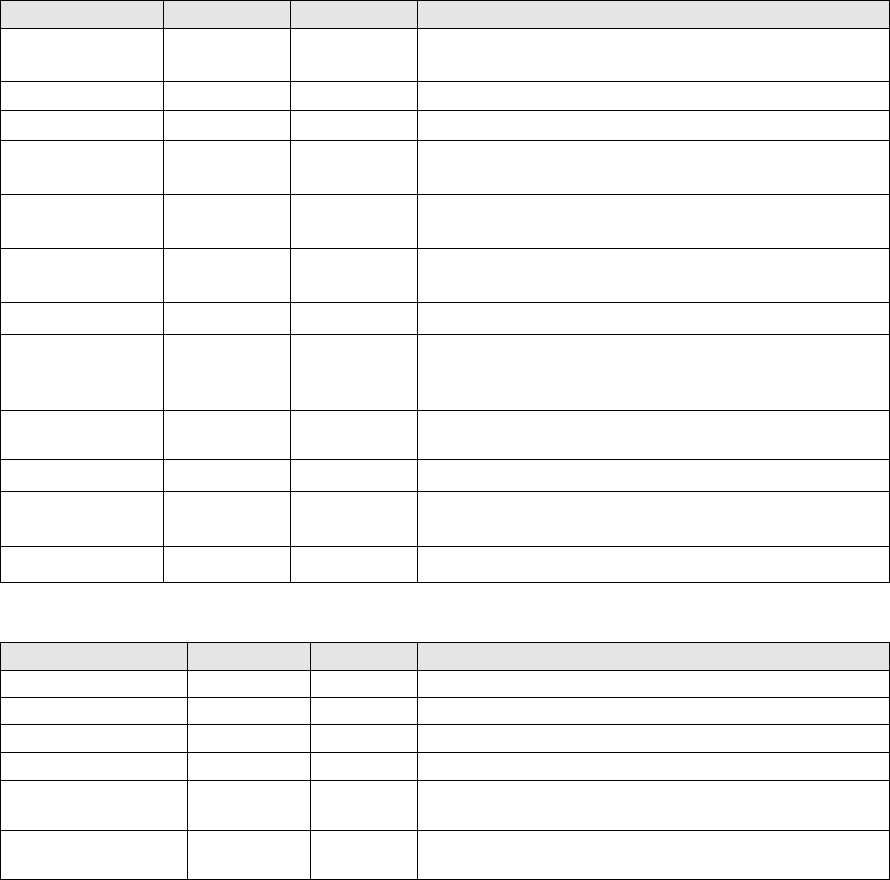
25
VEGETABLE CHART
Use a suitable glass pyrex bowl with lid. Add 30-45ml cold water(2-3 tbsp.) for every 250g unless
another water quantity is recommended - see table. Cook covered for the minimum time - see table.
Continue cooking to get the result you prefer. Stir once during and once after cooking. Add salt, herbs
or butter after cooking. Cover during a standing time of 3 minutes.
Hint : cut the fresh vegetables into even sized pieces. The smaller they are cut, the quicker they will
cook.
All vegetables should be cooked using full microwave power.
Cooking Guide for fresh vegetables
Vegetables Weight Time Comments
Broccoli
1/2
lb./250g 3-4 min
1 lb./500g 5-7 min
Brussels sprouts
1/2
lb./250g 4-5 min
Carrots
1/2
lb./250g 3-4 min
Cauliflower
1/2
lb./250g 3-4 min
1 lb./500g 5-7 min
Courgettes
1/2
lb./250g 3-4 min
Egg plants
1/2
lb./250g 3-4 min
Leeks
1/2
lb./250g 3-4 min
Mushrooms 0.3 lb./125g 2-3 min
1/2
lb./250g 3-5 min
Onions
1/2
lb./250g 3-4 min
Pepper
1/2
lb./250g 3-5 min
Potatoes
1/2
lb./250g 3-5 min
1 lb./500g 8-10 min
Turnip cabbage
1/2
lb./250g 5-7 min
Prepare even sized florets.
Arrange the stems to the centre.
Add 60-75ml(5-6tbsp.) water.
Cut carrots into even sized slices.
Prepare even sized florets. Cut big florets into
halves. Arrange stems to the centre.
Cut courgettes into slices. Add 30ml(2tbsp.) water
or a knob of butter. Cook until just tender.
Cut egg plants into small slices and sprinkle with 1
tablespoon lemon juice.
Cut leeks into thick slices.
Prepare small whole or sliced mushrooms. Do not
add any water. Sprinkle with lemon juice. Spice
with salt and pepper. Drain before serving.
Cut onions into slices or halves. Add only
15ml(1tbsp.) water.
Cut pepper into small slices.
Weigh the peeled potatoes and cut them into
similar sized halves or quarters.
Cut turnip cabbage into small cubes.
Cooking Guide for frozen vegetables
Vegetables Weight Time Instructions
spinach 0.3 lb./125g 2-3 min
broccoli
1/2
lb./250g 3-4 min
Peas
1/2
lb./250g 3-4 min
Green beans
1/2
lb./250g 4-5 min
Mixed vegetables
1/2
lb./250g 3-5 min
(carrots/peas/corn)
Mixed vegetables
1/2
lb./250g 4-6 min
(Chinese style)
Add 15ml(1tbsp.) cold water.
Add 30ml(2 tbsp.) cold water.
Add 15ml(1 tbsp.) cold water.
Add 30ml(2t tbsp.) cold water.
Add 15ml(1ttbsp.) cold water.
Add 15ml(1 tbsp.) cold water.
26
TOMATO & ORANGE SOUP
1 oz.(25g) butter
1 medium onion, chopped
1 large carrot & 1 large potato, chopped
13/4lb(800g) canned, chopped tomatoes
juice and grated rind of 1 small orange
11/2pints(900ml) hot vegetable stock
salt and pepper to taste
1. Melt the in a large bowl at P-HI for 1 minute.
2. Add the onion, carrot and potato and cook at P-
HI for 6 minutes. stir halfway through cooking.
3. Add the tomatoes, orange juice, orange rind and
stock. Mix thoroughly. Season with salt and
pepper to taste. Cover the bowl and cook at P-HI
for 14 minutes. stir 2-3 times during cooking, until
the vegetables are tender.
4. Blend and serve immediately.
FRENCH ONION SOUP
1 large onions, sliced
1 tbsp (15ml) corn oil
2 oz.(50g) plain flour
2 pints(1.2 liters) hot meat
or vegetable stock
salt and pepper to taste
2 tbsp (30ml) parsley, chopped
4 thick slices French bread
2 oz.(50g) cheese, grated
1. Place the onion and oil a bowl, mix well and cook
at P-HI for 2 minutes.
2. Stir in the flour to make a paste and gradually
add stack. Season and add the parsley.
3. Cover the bowl and cook at P-80 for 14 minutes.
4. Pour the soup into serving bowls, submerge
bread and sprinkle generously with cheese.
5. Cook at P-80 for 2 minutes, until the cheese has
melted.
STIR FRIED VEGETABLES
1 tbsp(15ml) sunflower oil
2 tbsp (30ml) soy sauce
1 tbsp (15ml) sherry
1"(2.5cm) root ginger,
peeled and finely grated
2 medium carrots, cut into fine strips
4 oz.(100g) button mushrooms,
chopped
2 oz.(50g) beansprouts
4 oz.(100g) mange-tout
1 red pepper, seeded and thinly sliced
4 spring onions, chopped
4 oz.(100g) canned water chestnuts,
sliced
1/4 head of chinese leaves, thinly sliced
1. Place the oil, soy sauce, sherry, ginger, garlic
and carrots in a large bowl, mix thoroughly
2. Cover and cook at P-HI for 4-5 minutes, stirring
once.
3. Add the button mushrooms, beansprouts,
mange-tout, red pepper, spring onions, water
chestnuts and chinese leaves. Mix thoroughly.
4. Cook at P-HI for 4-5 minutes, until the
vegetables are tender. Stir 2-3 times during
cooking.
Stir fried vegetables are ideally served with
meat or fish.
HONEYED CHICKEN
4 boneless chicken breasts
2 tbsp(30ml) clear honey
1 tbsp(15ml) whole grain mustard
1/2 tsp(2.5ml) dried tarragon
1 tbsp(15ml) tomato puree
1/4 pint(150ml) chicken stock
1. Place the chicken breasts in a casserole dish.
2. Mix all remaining ingredients together and pour
over the chicken. Salt and pepper to taste.
3. Cook at P-HI for 10-11 minutes. Rearrange and
coat the chicken with the sauce twice during
cooking.
RECIPES
27
BLUE CHEESE & CHIVE JACKETS
2 baking potatoes,
(approx.9 oz.(250g) each)
2 oz.(50g) butter
4 oz.(100g) blue cheese, chopped
1 tbsp(15ml) fresh chives, chopped
2 oz.(50g) mushrooms, sliced
salt and pepper to taste
1. Prick each potato in several places. Cook at P-HI
for 10-11 minutes. Halve and scoop the flesh into
a bowl, add the butter, cheese, chives,
mushrooms, salt and pepper, mix thoroughly.
2. Pile mixture into the potato skins and place in a
flan dish, on the rack.
3. Cook at P-80 for 10 minutes.
WHITE SAUCE
1 oz.(25g) butter
1 oz.(25g) plain flour
1/2 pint(300ml) milk
salt and pepper to taste
1. Place the butter in a bowl and cook at P-HI for 1
minute, until melted.
2. Stir in the flour and whisk in the milk. Cook at P-
HI for 3-4 minutes, stirring every 2 minutes until
thick and smooth. Season with salt and pepper
to taste.
STRAWBERRY JAM
11/2 lb.(675g) strawberries, hulled
3 tbsp(45ml) lemon juice
11/2 lb.(675g) caster sugar
1. Place strawberries and lemon juice in a very
large bowl, heat at P-HI for 5 minutes, or until the
fruit has softened. Add sugar, mix well.
2. Cook at P-80 for 23-28 minutes, until setting
point*is reached, stir every 4-5 minutes.
3. Pour into hot, clean jars. Cover, seal and label.
* setting point : To determine setting point, place 1
tsp(5ml)jam onto chilled saucer. Allow to stand for
1 minute. Move surface of jam gently with your
finger, if the surface wrinkles setting point has
been reached.
PLAIN MICROWAVE CAKE
4 oz.(100g) margarine
4 oz.(100g) sugar
1 eggs
4 oz.(100g) self raising flour, sifted
2-3 tbsp(30-45ml) milk
1. line the base of 8" (20.4cm) cake dish with
grease-proof paper.
2. Cream the margarine and sugar together until
light and fluffy. Beat in the eggs and fold in the
sifted flour alternately with the milk.
3. Pour into prepared container. Cook at P-HI for 3-
4 minutes, until a skewer comes out cleanly.
4. Leave the cake to stand for 5 minutes before
turning out.
OMELETTS
1/2 oz.(15g) butter
4 eggs
6 tbsp(90ml) milk
salt & pepper
1. Whisk together eggs and milk. Season.
2. Place butter in 10"(26cm) flan dish. Cook at P-HI
for 1 minute, until melted. Coat the dish with the
melted butter.
3. Pour omelette mixture into flan dish. Cook at P-
HI for 2 minutes. whisk mixture and cook again
at P-HI for 1 minutes.
28
SCRAMBLED EDD
1/2 oz.(15g) butter
2 eggs
2 tbsp(30ml) milk
salt & pepper
1. Melt the butter in a bowl at P-HI for 1 minutes.
2. Add the eggs, milk and seasoning and mix well.
3. Cook at P-HI for 2 minutes, stirring every 30
seconds.
SAVORY MINCE
1 small onion, diced
1 clove garlic, crushed
1 tsp(5ml) oil
7 oz.(200g) can chopped tomatoes
1 tbsp(15ml) tomato puree
1 tsp(5ml) mixed herbs
8 oz.(225g) minced beef
salt and pepper
1. Place onion, garlic and oil in casserole, and cook
at P-HI for 2 minutes or until soft.
2. Place all other ingredients in casserole. Stir well.
3. Cover and cook at P-HI for 4 minutes then P-80
for 7-11 minutes or until the meat is cooked.